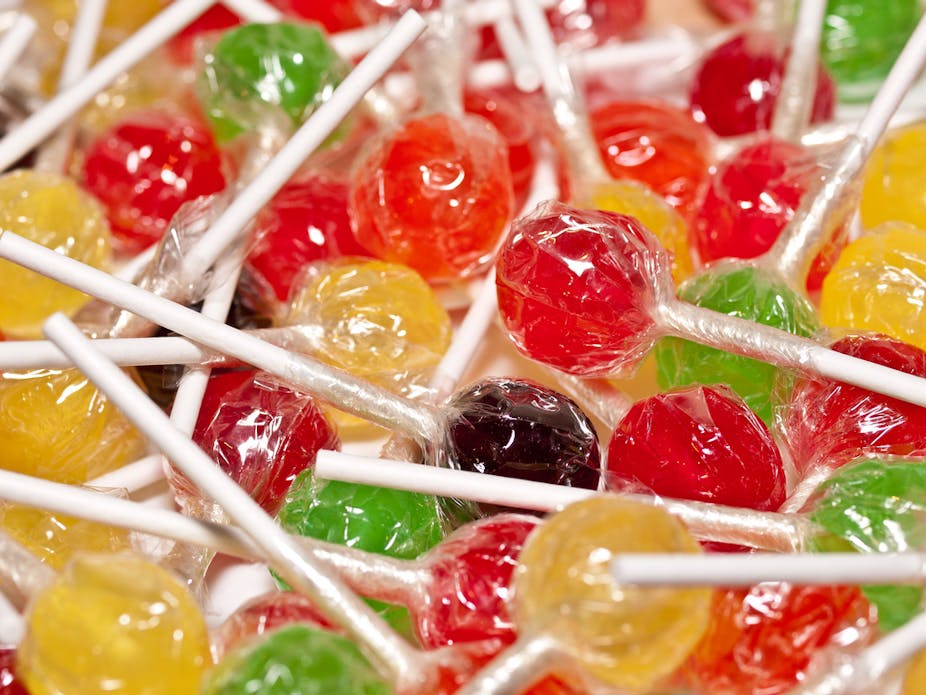A growing body of evidence is focusing attention on the dangers posed by the myriad chemicals in our food. Although certainty around the precise impact of these chemicals is some way off, what we do know indicates a chemical cocktail of colourings, preservatives, and flavour enhancers, among other things, may be having a negative impact on our minds and bodies.
When we bite into a luscious piece of chocolate cake, sip on a vanilla latte or send the kids off to school with a salami sandwich, we don’t tend to look too far past the taste of the food we’re consuming.
Sure the cake has heaps of sugar – but it wouldn’t taste good otherwise; the latte always tastes better with full-cream milk; and well, the kids just love salami.
But when we eat these foods, or provide them to children, we’re also exposing ourselves to a range of chemicals that have come to pervade our food supply.
The chocolate cake may well contain artificial colourings, along with the cocoa to give it that beautiful brown colour, and perhaps a preservative in the icing or cream, or even the cake itself.
The vanilla latte will more than likely have a benzoate preservative in the syrup, as well as colourings, not to mention artificial flavourings.
Salami generally won’t have colourings, but the kids will be tucking into nitrate and nitrite preservatives (not to mention the high percentage of fat).
Now these chemicals do serve a purpose of sorts – they’re there to make the food more attractive to us (and to our kids). They’re designed to be eye-catching (colours), long-lasting (preservatives), taste great (flavours and flavour enhancers), or have few to no calories (artificial sweeteners).
But research is beginning to raise questions about the long-term effects of these chemicals, particularly on children.
The Southampton study
Public interest in artificial food additives was brought to the forefront in 2007 with the release of the so-called Southampton study.
The results of this study showed the adverse effects of a mix of artificial colours and one preservative (all of which are permitted in Australia) for a group of children aged three to four and eight to nine years.
These children were specifically selected because they represented the “normal” population. They were not children who had an ADHD diagnosis – they were simply kids you’d find in an everyday classroom.
The results of the Southampton study indicated effects on attention and activity in these children after the consumption of the additive mixes.
While there’s criticism levelled at the Southampton study on a number of grounds, it remains one of very few studies to have examined the effects of mixtures of additives on attention and behaviour in children without a psychological diagnosis.
While cited as a flaw, the lead author of the study, Professor Jim Stevenson noted that looking at the mixture of additives was important as it mimicked the consumption of these chemicals by children in real life.
Few children would consume only one colouring, or only a preservative. Rather, because of the prevalence of these chemicals within our food supply, and particularly within foods aimed at children, consumption of a “cocktail of chemicals” is actually the norm.
A review of permitted artificial colourings in the United States recently concluded that because of toxicological considerations food dyes should not be considered safe.
These considerations included the carcinogenity of the dyes, hypersensitive reactions and behavioural effects. The review concluded by recommending that manufacturers should voluntarily replace the artificial dyes with natural alternatives.
The aftermath
On the back of the Southampton study, the European Food Standards Agency (EFSA) instituted a new labelling law, with a phase-in period of two years.
From July 2010, any food containing any one of the food colourings examined in the Southampton study sold within the European Union must contain a label stating “may have an adverse effect on attention and activity in children”.
This includes goods imported from other countries.
While much of the public’s attention has been focussed on artificial colourings, other studies are beginning to look at other chemicals that we add to our food.
A 2009 study by Italian researchers, for instance, concluded that two food chemicals – the widely used preservative propyl gallate and an additive used to prevent shellfish from discolouring - both had estrogren-mimicking properties.
Their conclusion was these chemicals could in fact interact with, and alter, human hormones.
While further research is yet to be conducted within an animal model, the compositions of these chemicals suggests the potential to cause reproductive problems in animals, and potentially, in humans.
To be fair to the food industry, and indeed to the modern consumer, the jury is still out on the effects these chemicals are having on our biological make-up.
There’s much research that still needs to completed about the effects of additives in terms of their carcinogenity, hypersensitivity and behavioural effects, especially with respect to their long-term consumption.
But there’s a growing body of research that suggests these chemicals can be detrimental to our health and well-being.
While widely approved for use in our food supply, little current research exists to support the safety of their long-term use on “human indicators” such as attention, mood or behaviour.

